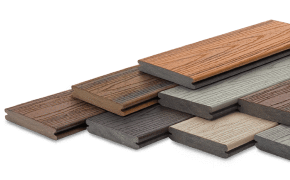Decking, Railings and Stairs
Once your foundation and footings have been set, it’s time for your deck to really begin to take shape! This next phase of construction involves laying deck boards, installing railings, and building stairs. While framing your deck and laying the foundation contribute to a structurally-sound deck, it’s equally important to be sure your deck boards are properly spaced, stairs are constructed properly, and railings have been secured to make a deck that’s safe and can provide you with years of enjoyment.
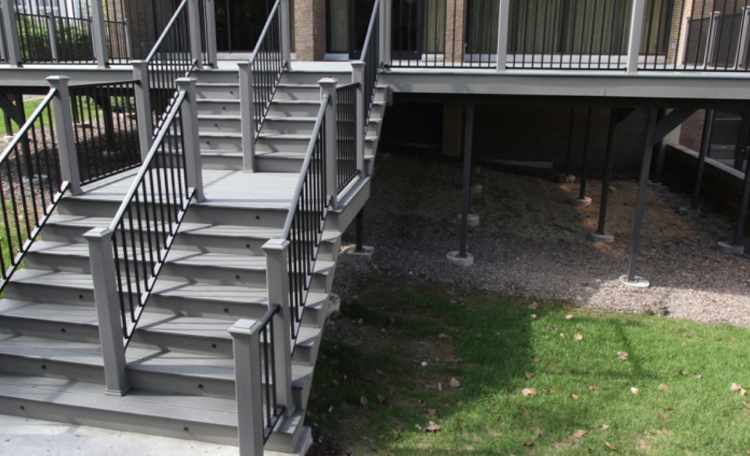
Laying Deck Boards
Laying deck boards is the part of the process when your deck truly begins to come to life. The materials you’ve chosen and the style and color of your decking play a role in creating your outdoor aesthetic. Whether you plan to lay your boards in a more traditional linear style, or have decided that an intricate inlaid pattern is right for your design, there are some best-practices to follow when installing decking boards.
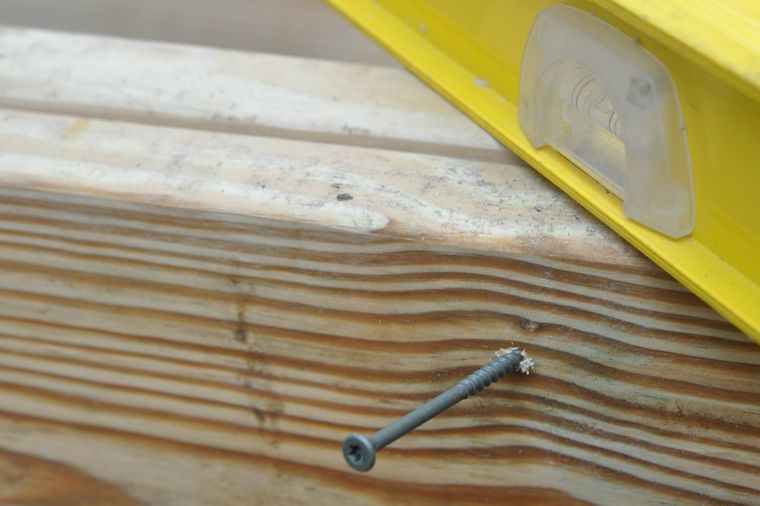
Pro Tip
-
Composite decking offers the look of wood without the rigorous upkeep. From controlling deck seams to working with hidden fastener systems, learn more about how to install composite decking.
-
When laying down your decking, it’s important to have just the right amount of space between your boards. The amount of spacing between boards varies by deck materials, but proper spacing and ventilation can make it easier to clean between boards.
-
Picture framing (or racetrack decking) finishes the perimeter of a deck and covers exposed deck edges. Learn how to do this edging technique for a “picture” perfect look.
Pro Tip
Installing Deck Railings
Installing deck railings is critical for elevated decks, making them compliant with building codes and helping make enjoying your deck safer. Before you start installing railings, familiarize yourself with the components and steps involved to make the process smoother.
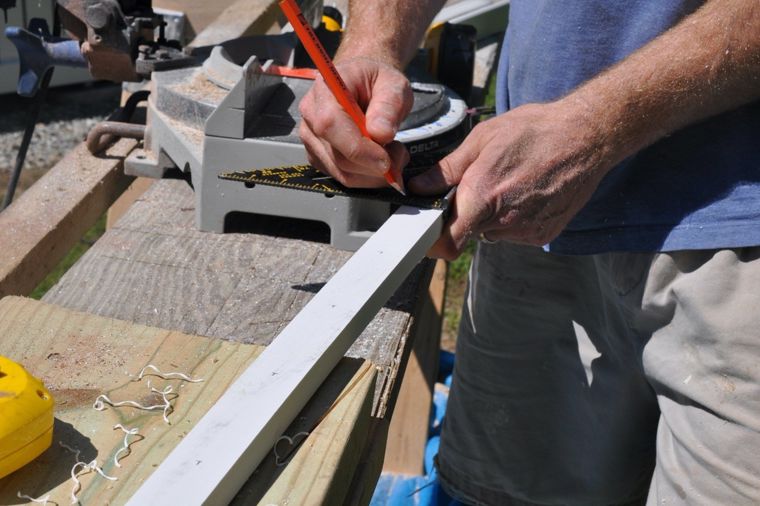
Pro Tip
-
From railing caps to balusters, learn about the different parts and components of deck railings.
-
Current building codes call for stronger posts that need to be installed prior to adding decking. Learn how to install sturdy deck rail posts to give your railing greater stability.
-
While balusters may be the most expensive railing component, they’re one of the most important and crucial to your railing’s safety and adherence to IRC codes.
-
Composite deck railings are a low-maintenance option that requires minimal upkeep, and is available in easy-to-install kits and systems. Learn how to install composite railings.
Pro Tip
Building Deck Stairs
Building deck stairs can be one of the most difficult parts of building a deck. It requires patience, precision, and a grasp on the mathematical calculations required to construct your deck stairs properly. Your deck stairs will also require hand railings of their own to add greater stability. Learn more about the calculations and components involved in building deck stairs and completing your deck.
Having the right calculations beforehand can make building deck stairs a lot easier. Learn how to calculate rise and run, dimensions for the rise, step height and tread depth, as well as stringer length.
How to Build Deck Stairs & Steps
From learning the different parts of deck stairs to understanding common codes requirements, get tips for building deck stairs and troubleshooting any issues throughout the process.
Learn more about the specific guidelines for handrails on stairs, as well as best-practices for constructing them.
How to Install Deck Stair Railings
Get step-by-step instructions for installing deck stair railings and learn more about the specifications required for guardrail height and openings.
Takeaways From This Chapter
- The amount of spacing between decking boards varies depending on the material you’ve decided to use, but proper spacing is essential to ventilate and more easily clean between deck boards.
- Railings add an extra element of safety to your deck. Making sure there is correct spacing between balusters and that rail posts are compliant with building codes is critical to proper construction.
- Building deck stairs can be one of the most complex parts of constructing a deck. Having the right calculations for the dimensions needed to build deck stairs beforehand can make for a smoother process.
More Chapters In This Guide
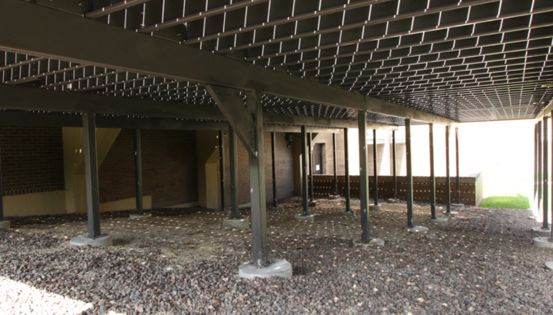
Foundation, Posts and Framing
From designing your deck to making it a reality, take the information you gathered from the planning stages and start laying a firm foundation for your deck. Learn more about installing deck footings, posts, and framings.
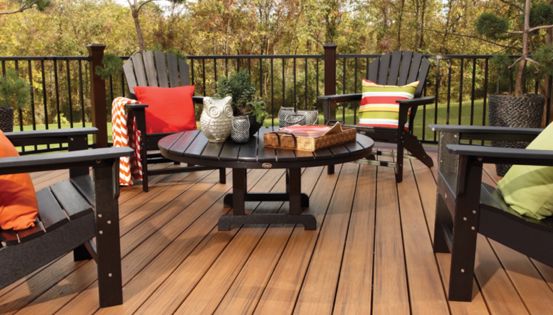
Maintaining & Enjoying Your Deck
Once your deck is complete, discover how to properly clean and maintain it in order to get the most use out of your deck for years to come.
Find Nearby Deck Boards & Materials
